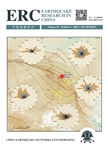Review of the Application of Rotational Motions in Seismology
Review of the Application of Rotational Motions in Seismology作者机构:The Second Monitoring and Application CenterChina Earthquake Administration
出 版 物:《Earthquake Research in China》 (中国地震研究(英文版))
年 卷 期:2018年第32卷第4期
页 面:456-469页
核心收录:
学科分类:07[理学]
主 题:Rotational motions Surface wave Tomography Ring laser technology Free oscillation Multi-parameter inversion
摘 要:Rotational seismology is an emerging field for studying all aspects of rotational ground motions induced by earthquakes,explosions,and ambient vibrations. It is of interest to a wide range of geophysical disciplines,including strong-motion seismology,earthquake engineering,earthquake physics,seismic instrumentation,as well as to the complete description of particle motions( translational motion,rotational motion and deformation).This article mainly summarizes the application of rotational motions to seismology. Based on the collocated measurements of translational motion and rotational motion, the theoretical formulas of calculating the teleseismic Rayleigh wave and the Love wave phase velocity are derived. Taking the Siberian earthquake as an example,the phase velocity structure near the station is calculated. As a ring laser that s sensitive only to SH-type motion,one of the expectations of the ring laser measurements is to help seismologists separate P and S waves in the wave field. It also helps distinguish Love and Rayleigh wave energy in the ocean-generated noise field,as well as determine the back azimuth of oceanic noise sources. The long-period toroidal modes of free oscillation, one of the most challenging observations in seismology,are then observed with a ring laser. Finally,the importance and practicability of multi-parameter inversions including rotational observations are expounded. At the end of this paper,we present the existing problems in rotational seismology research and its broad application prospects.



